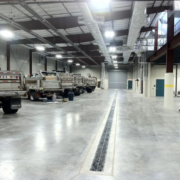Facility Management Trends Across School Districts
Facility management is a critical component of any school district’s operations.
It involves overseeing and maintaining the physical infrastructure of the school facilities, such as buildings, grounds, and equipment. Effective facility management can ensure that the school environment is safe, secure, and conducive to learning, while also providing a cost-effective approach to maintaining these resources.
School districts face unique challenges in managing their facilities, including budget constraints, regulatory compliance, and the need to adapt to changing educational needs. In this blog post, we will explore the importance of facility management in school districts and provide some practical tips and strategies for managing school facilities effectively.

The Importance of Facility Maintenance for School Districts
The importance of facility management in school districts cannot be overstated.
The physical condition of a school facility can have a significant impact on the quality of education that students receive. For example, poorly maintained buildings can create health and safety hazards, making it difficult for students and staff to concentrate on learning. In contrast, a well-maintained school facility can create a positive learning environment that enhances academic achievement.
Effective facility management also helps school districts save money in the long run. Regular maintenance and repairs can prevent small problems from becoming big ones, reducing the need for costly replacements or renovations.
Additionally, proper maintenance can extend the lifespan of equipment and facilities, further reducing costs over time.
The Challenge for Facility Managers
However, managing school facilities can be a challenging task. School districts often operate on tight budgets, leaving little room for discretionary spending on maintenance and repairs.
Moreover, regulatory compliance requirements can add another layer of complexity to facility management. For example, school districts must comply with a variety of environmental, health, and safety regulations, which can be difficult to navigate without specialized expertise.
To effectively manage school facilities, school districts need to develop a comprehensive facility management plan. This plan should include regular inspections, preventive maintenance, and repairs as needed. It should also identify potential hazards and risks and develop strategies to mitigate them. Additionally, the plan should include procedures for emergency response and disaster recovery.
Another critical aspect of facility management in school districts is staff training. All staff members, including teachers, administrators, and custodial personnel, should be trained on safety procedures and best practices for maintaining school facilities. This can help prevent accidents and injuries and ensure that the school environment is safe for everyone.

How Facility Managers Can Close the Gap
Facility managers are constantly tasked with doing more with less. It’s time to accept there’s only one way for facility managers to close the gap – adopt technology that makes their team more efficient.
Increasing efficiency means helping the team focus on value add tasks – specifically completing maintenance tasks. eFacility makes facility managers and their teams more efficient by ensuring they have the right information to fix any problem. eFacilities software is incredibly value for facility managers supporting multiple facilities because it gives the team all of the information they need to solve a problem at their fingertips.
eFacility also closes the training gap. As more worker retire and staff shortages continue it’s hard to keep up with training. It may feel like you never have the same person working on the same problem from year to the next. eFacility closes this gap by capturing the important information from the last work order so new staff can tackle the problem like they’ve been their before.
eFacility helps Facility Managers Provide a Safe and Health Learning Environment
In conclusion, effective facility management is critical for ensuring that school districts provide a safe and healthy learning environment for students and staff.
By developing a comprehensive facility management plan, identifying potential hazards and risks, and providing staff training, school districts can manage their facilities effectively and efficiently.
With proper maintenance and management, school facilities can provide a positive learning environment for generations of students to come.
Facility maintenance across school districts is changing and facilits managers have a lot of challenges. They will level the playing field when they make their teams’ jobs easier. When the job is easier you’ll see an increase in morale, retention, and completed work orders.
If you’re facing any of these challenges we’d love to hear what they are to see if we can help. Click here to schedule a call with us today. In the worst case you’ll learn about new technology that might help in the future and best case you’ll finally solve your most pressing challenges. Click here to schedule a call with us today.







